Hidden Meanings Behind the Movie,
"Maudie" (Spoilers)
Reviewed by Joy Davis
Synopsis: "Maudie" is a biographical romantic drama about Maud Dowley, a celebrated folk artist in Nova Scotia who suffered from debilitating Rheumatoid Arthritis. She worked for, then married Everett, a gruff fish peddler who lived a loner existence. Maud was content with having a simple life with him in their tiny house, painting pastoral scenes in bright colors of Nature and the daily life of the townspeople. When Maud's art was recognized by Sandra from New York, it lead to widespread publicity and growing public demand for her art that was just too much for Everett to take.
Warning: Spoilers within the Presentation
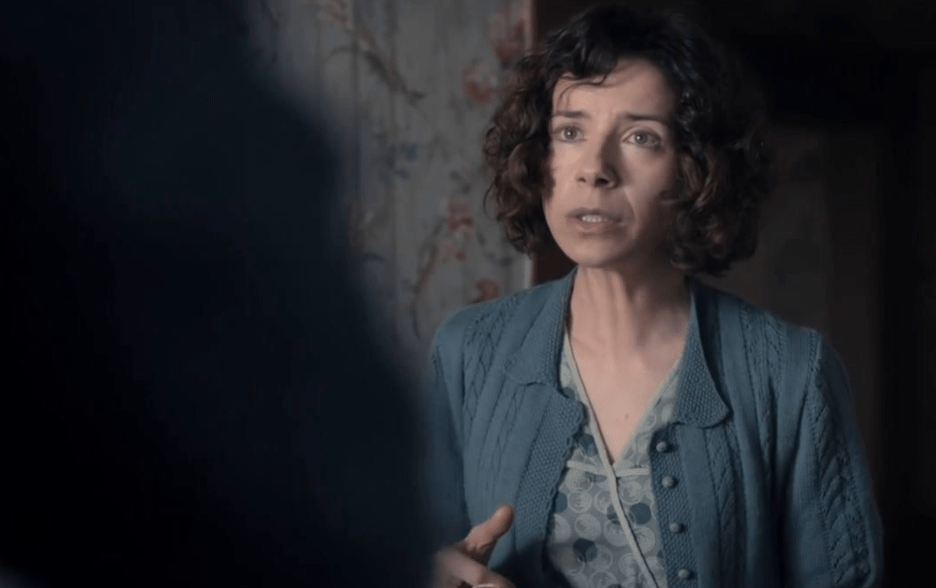
Stuck, Inflamed, and Emotionally Pained
Welcome to "Conscious Movie Reviews." I'm your host Joy Davis and here to review "Maudie," a biographical romantic drama. Set in Nova Scotia, Maud Dowley was forced to relocate when her older brother Charles announced that he sold the family home that was left to them by their parents. She suffered from debilitating Rheumatoid Arthritis and placed under the care of her Aunt Ida. By not consulting with Maud about the sudden change of plans, it was the family's way of disregarding her thoughts and feelings again.
When Maud returned from a night out at the local dance club, she was berated by her Aunt. It was typical of Ida to lash out with harsh criticism and toxic shame. Maud was miserable living with her.
For those who suffer from a chronic disease, there is usually an emotional component to it. Having Rheumatoid Arthritis reflected Maud's emotional inflexibility that kept herself and joints stuck, inflamed and in pain. Her poor health was an outer manifestation, along with her Aunt's abuses, to reveal how she had mistreated herself over the years to be self-rejecting, critical, stuck, and stubborn to change.
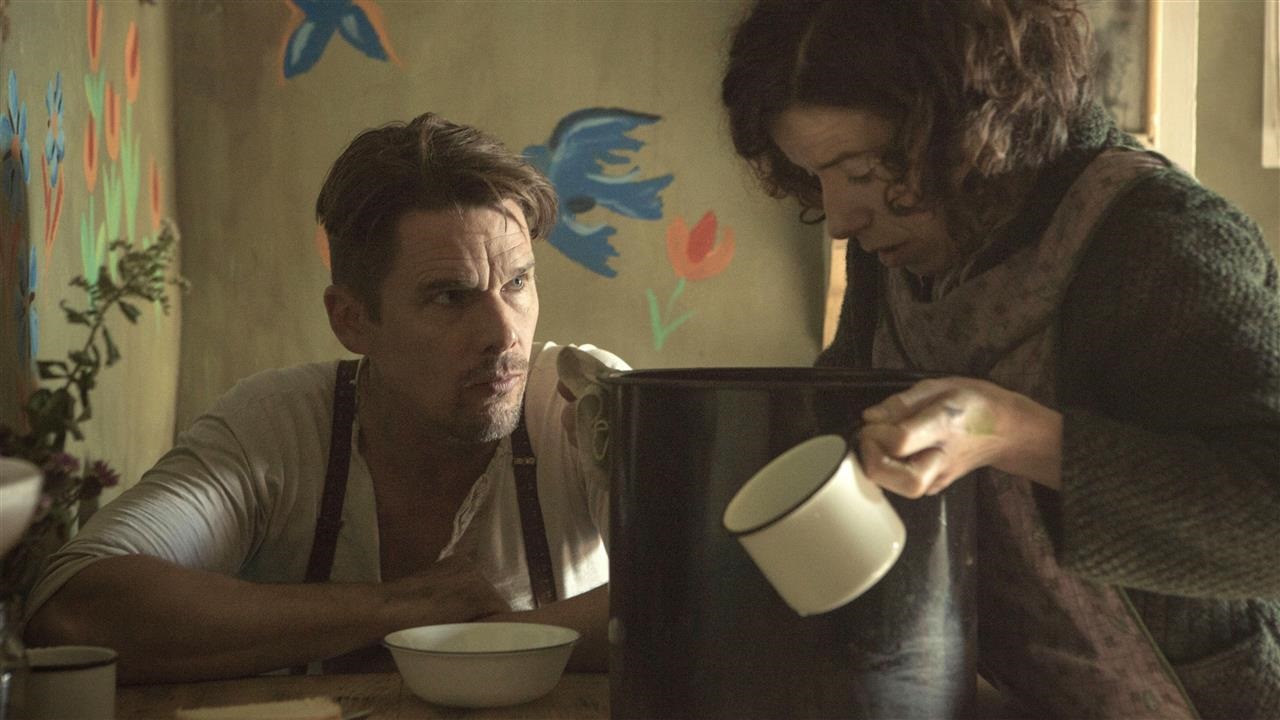
Working for a Gruff Man
By responding to a help wanted ad for a live-in maid, Maud was reluctantly hired by Everett, the local fish peddler and 40-year-old bachelor at Marshalltown. He was wary of her ability to do the job.
When he wrongly accused her of going through his stuff, then called her a lazy ass for her disability, she was kicked out. Maud quietly returned the next day, intent on proving her worth by scrubbing the floor and making chicken soup from scratch. He was impressed enough to let her stay.
As an orphan, Everett was guarded in a gruff way to not trust others - choosing isolation to live alone for years in a tiny house. He lead a practical life to only have guard dogs as trusty companions and keep few friends.
Everett's extreme sensitivity to rejection with unpredictable bouts of anger and avoiding close relationships, is typical of abandonment survivors in the state of Shattering. This is according to Susan Anderson, an abandonment recovery expert. Shattering, she explains, can bring you to the seat of your unconscious conflicts that arouses an instinct for survival when primal needs and fears begin to surface. When you do emerge from this state, it's from taking significant steps in the direction of emotional self-reliance.
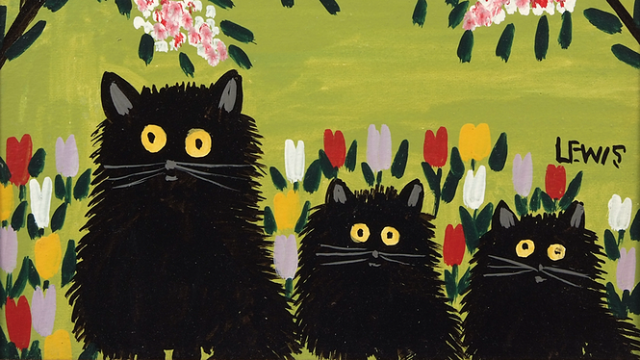
A Demand for Maud's Folk Art
Because canvas was too expensive, it was okay for Maud to paint on every available surface of the house with scenes she observed in Nature and the daily lives of the townspeople.
Maud preferred primary, bright colors. Her art had no shadows or rain in the clouds. She practiced Lila that means "divine play" in Sanskrit, to delight in God's playground that was all around her - painting the vibrant spirit of what she sees.
Many are naturally drawn to the child-like nature of Maud's paintings. Her art remains transcendent to take you beyond seeing the objects and background in a two-dimensional way to experience its fifth-dimensional quality of coming alive in a playful way - a gateway where you can Soul Travel to the source of her inspiration on the inner that's full of joy.
When Maud's Christmas card paintings was recognized by Sandra from New York City, it lead to commissioned work for $5 and widespread publicity.
Public demand for her folk art grew, from tourists stopping by her home to Vice President Richard Nixon requesting a painting.
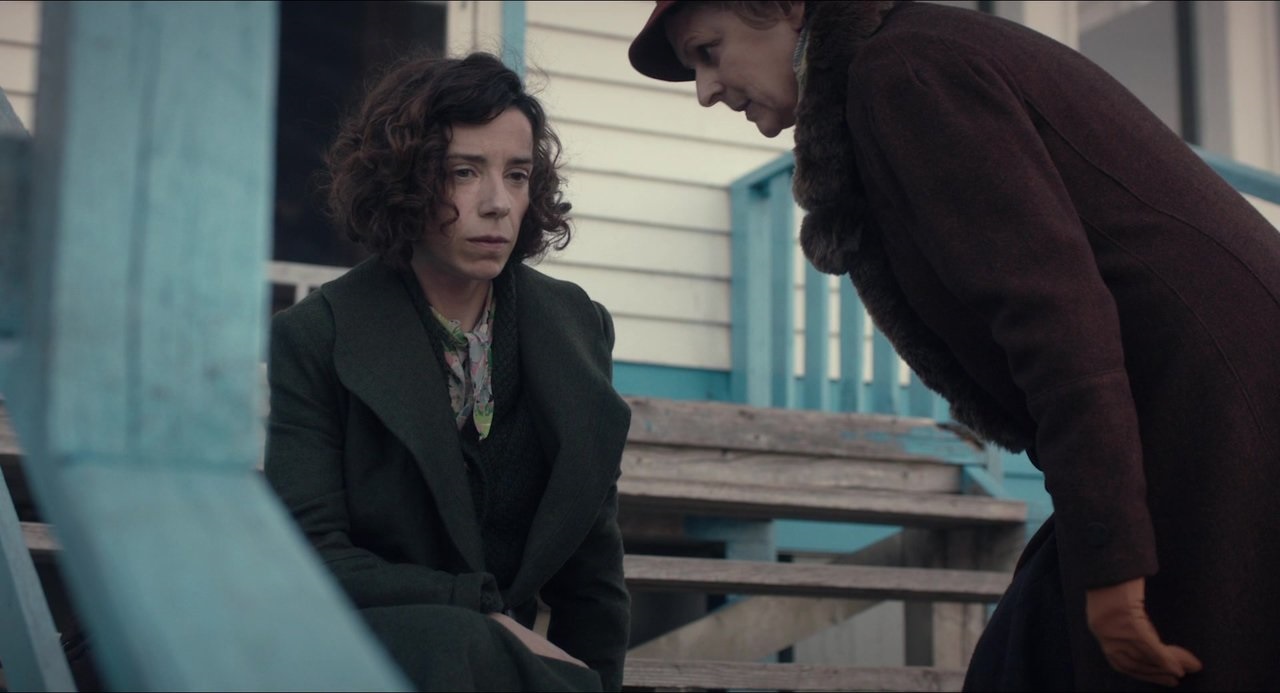
Two Guarded Hearts
Aunt Ida asked Maud to visit after seeing her on television. She admitted her past transgressions by saying, "I don't want to die full of regrets. I regret not letting you hold your baby. She wasn't deformed." Maud's child didn't die after birth, but was secretly adopted off by her and Charles years ago for money.
The truth was hard for Maud to take, including her husband.
"I never asked for this. Nothing but pain since you stepped into my life," complained Everett. The locals saw him on TV as being cold and cruel, so he broke up with Maud from the pressure.
Both Aunt Ida and Everett were guarded in their hearts to be in constant survival and protection mode. The truth is that a guarded heart is not selective. Everything is kept from it. That includes the influence of infinite Love and the universal support and strength that we are designed to live from. This is according to Susan Taylor Shier, author of "Soul Reunion."
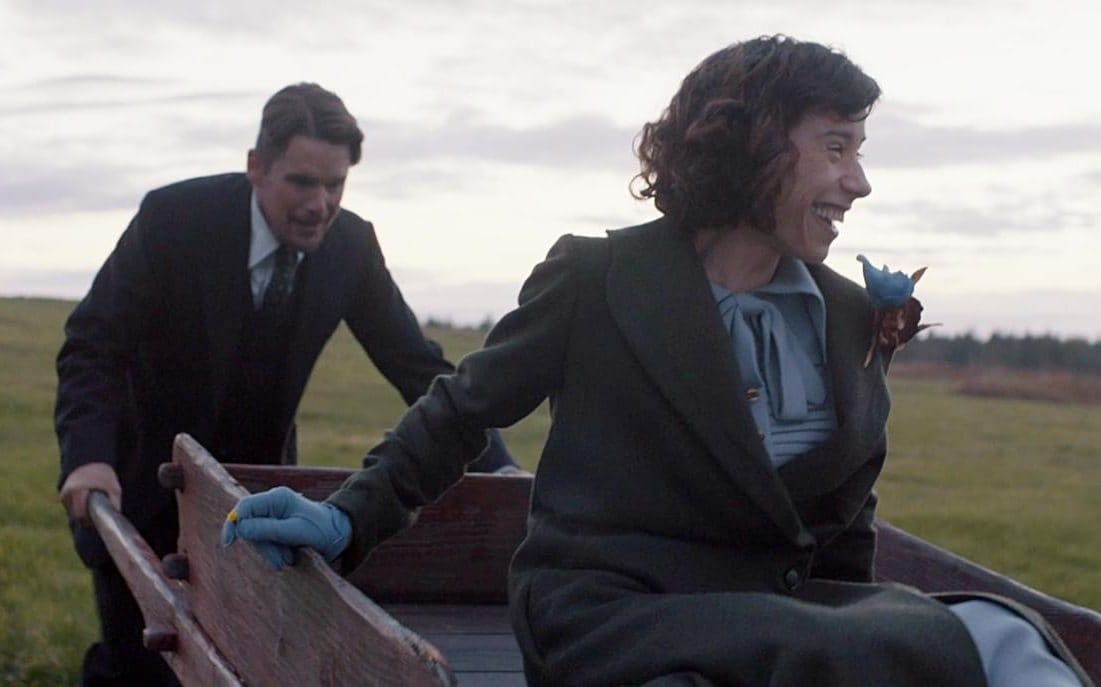
Coloring Everett's World
Before meeting Maud, Everett's life resembled shades of grey from being simple, practical and no-nonsense. Living on basic necessities was good enough for him.
The brute within Everett softened from years of marriage to Maud. She gave him the space to relax and just be, filling his world with art that nurtured. Their tiny home came to life with bursts of color, so he can drop his guard and play again. They were like opposites attracted to each other for creating balance and wholeness within.
Over time, their roles switched for Everett to be of loving service to Maud as the housekeeper and caretaker when her health worsened from emphysema. This is a good example of what famous writer Jackson Brown Jr. advised by saying, "Marry the right person. This one decision will determine 90% of your happiness or misery."
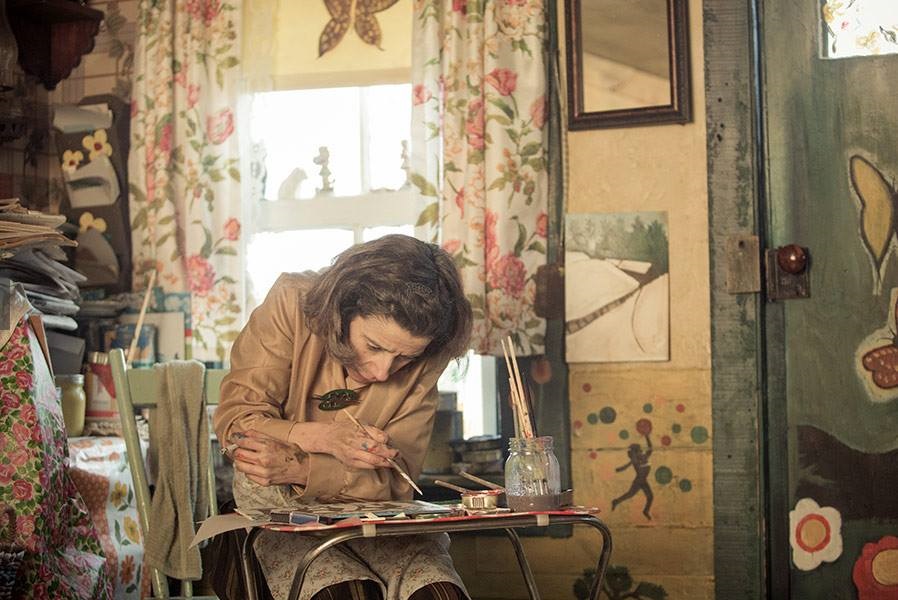
Being Happy & Content
Everett took Maud on a surprise visit to a white house where her daughter lived. She only watched from a distance. It was enough to see her grown child doing well.
Maud was like that, easily content to ask for so little, yet lavished with great abundance that comes from a grateful heart. Her happiness came from having lived a simple life as a beloved folk artist with a caring husband by her side.
As her health deteriorated, the last year of her life was spent at home, painting as much as she could. She died peacefully in 1970.
Subscribe to Beyond 50's Radio Updates!
Beyond 50 values your personal information. Your email will
not be used, sold, or
shared with any outside party.
Related Interviews:

Invisible Worlds Art

Tiny Home Building

Mending the Family Net
Watch It Now!




